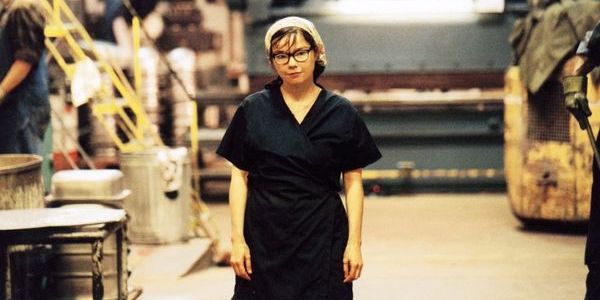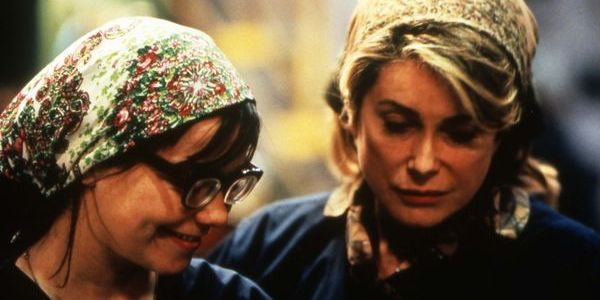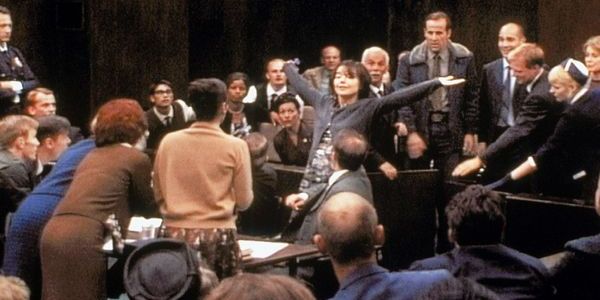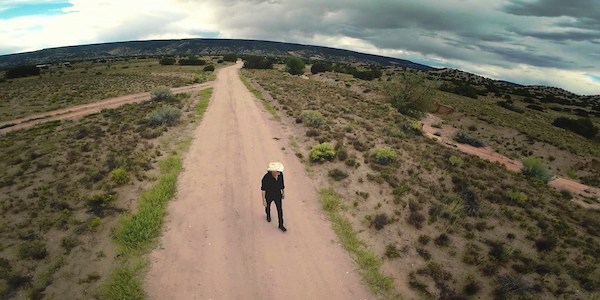DANCER IN THE DARK: A Grim Deconstruction of the Modern Musical 20 Years Later
If Bob Fosse ever taught us anything, it’s that musicals don’t always need to end happily. Even behind all the glitz and glamour that trademarks the genre – words, actions and more importantly songs, can often reflect an entirely different meaning when hinging on the notion of unavoidable tragedy. We saw it with the unshakable curse of loneliness in Sweet Charity, we saw it with the rise of the Nazi occupation in Cabaret, we even saw it with the pressures of success leading to self-destruction in All That Jazz. But while the presence of disaster was always there to cast its shadow, those traditional moments of much-needed razzle dazzle were always there to remind us that even in a world full of darkness, there could always be light.

That was until the king of nihilism, Lars von Trier, released Dancer in the Dark, the final installment of his ‘Golden Heart’ trilogy at the 2000 Cannes Film Festival and crushed all those fail-safe conventions used to comfort audiences. Yet, it would have been foolish to think that the self-proclaimed “best director in the world” was going to roll into the new millennium with a prim-and-proper reimagining of Les Miserables – he’s no stranger to controversy. We’re talking about the man who made a film about a group of misfits pretending to be mentally handicapped as a social experiment, so if crossing the line seems to be his forte, it should come as no surprise that his attempt at a musical would be nothing short of a challenging experience. But like all great art, Dancer holds a mirror up to the world with such force and clarity, it’s almost impossible not to catch a glimpse of ourselves in its stark reflection.
All The World’s A Stage
For what it’s worth, it doesn’t matter that Trier’s complicated relationship with women is often compared to the torture he puts his female protagonists through, because the director has no problem with admitting that there’s a correlation between the two. Needless to say, he claims that a personal grudge with his long-deceased mother could also be partly responsible. It’s heavy stuff when you think about it, but makes perfect sense from a psychoanalytical perspective; you can just see Freud looking down from the heavens, slow-clapping the blatantly obvious, self-evaluating antics unfolding on screen. That being said, the women in his films are never weak. In fact, they almost always portray an admirable strength through their resilience even when faced with the bitter end, and his third ‘Golden Heart’ bearer might just be the most gleaming example of this to date.
This time, we follow Selma Jezkova (Bjork), a Czech immigrant who relocated to a small town in northern America with her son, Gene (Vladica Kostic), in hope that ‘the land of opportunity’ will build a more idyllic future for them both. Between working in a factory with her best friend, Kathy (Catherine Deneuve), and attending late-night rehearsals for an amateur production of The Sound of Music, the seemingly mundane routine of Selma’s existence is weighed down by a degenerative eye condition that Gene also shares. In a desperate attempt to save enough money for his operation before it’s too late, Selma begins working overtime at the factory and by doing so, accelerates the severity of her own condition.
To make matters worse, during a moment of shared vulnerability, Selma confesses her devastating secret to property owner, Bill (David Morse), who takes advantage of her predicament to keep his own head above water with the materialistic demands of his wife. As the relationship between the two quickly shifts from trusting to tragic, Selma’s grip on reality begins to decay as rapidly as her own vision, but she never loses sight of her sole objective to fight for Gene’s future.

Best described as a ‘recipe for disaster’ style premise, this is precisely the kind of emotional rollercoaster to be expected from Trier, not only because he’s a master manipulator, but because Selma’s predicament feels oddly symbolic of the director’s attitude towards the capitalist mindset that, even now, seems to infiate the USA. Piling on one misfortune after another to put her through the wringer, Trier paints the bleakest possible portrait of a foreigner’s experience living in America and gives us front row seats to every painful moment.
The Idea That Lars Built
Perhaps it’s dangerous to empathise with the perspective of an outsider who, till this day, refuses to set foot in the country he’s so confident in making judgements about – yet, having that ‘physical distance’ could also make for a far more objective argument. After all, Trier was brought up in a time and place that was heavily influenced by a movement that encouraged children to be freethinking individuals in hope to diminish the right-wing conventionalism suffocating Europe at the time. So, while Dancer In The Dark wasn’t his first attempt at pushing the artistic boundaries governed by the western world, it had enough game-changing qualities to break them down and be the first to succeed.
Apart from the musical overture at the beginning, there’s nothing to sugarcoat this experience, and it becomes clear from the very first scene that this is a very different kind of musical; it’s not art, it’s anti-art. From the bleached-out colour grade draining every location of life to the choppy editing style that cuts dialogue off mid-sentence, Trier refuses to enhance any given moment of optimism with beauty to connect with the viewer. Exercising a handful of techniques plucked from Trier and Thomas Vinterberg’s Dogme 95’ manifesto, the film teeters on a documentary-style: it’s shot on digital video to give a drab, stripped-back appearance, there’s a subtle use of natural lighting and every scene is almost completely absent of technical flourishes. Everything is ugly, but for a good reason.

The only time we’re treated to a dose of aesthetic relief is during the musical numbers that unfold in Selma’s imagination, which is probably the closest thing we ever feel to a ‘Hollywood’ musical in the traditional sense. Trier uses more than 100 stationary cameras to capture each sequence from a variety of angles as if they were happening on stage and colours are ramped up an almost hallucinogenic effect to convey a sense of heightened fantasy. The transitions into these daydreams are set off by sounds within Selma’s immediate surroundings, which can range from the robotic rhythm coming from a factory machine to the scribbling of a pen across paper in the deafening silence of a courtroom, and it’s these devices that are not only Trier’s way of showing us what’s real and what’s imagined but are also his warning signs for the unfortunate events waiting to happen when Selma snaps back into reality.
It’s Oh So Quiet
If one thing could be said, Bjork’s central performance as Selma is without a doubt the film’s greatest strength. Balancing a childlike innocence with brazen theatricality, the actress conveys a staggering emotional range through her face, body and voice, that’s often amplified by the intrusive nature of Robby Muller’s hand-held cinematography. That’s not to say the rest of the cast fall between the cracks, especially when we’re graced with the Parisian-style noblesse oblige of Deneuve or a mawkish Peter Stormare playing the hopeless romantic attempting to win Selma’s heart, but just like the singer’s obscure discography, there’s an indescribable uniqueness in Bjork’s portrayal of Selma, one that exudes an authenticity rarely captured on film and defies stylistic categorisation.

Yet, there seems to be an underlying tension bubbling beneath the surface that takes the urgent realism of Trier’s film to another level and in retrospect, the notorious controversy between the director and his star could have been partly to blame. Among the on-set altercations that, at one point, had the Bjork spitting at Trier’s feet and the allegations of sexual harassment that were conspicuously swept under the rug, it’s difficult to know just how much the feud affected the emotional intensity of her performance. Although, in some twisted way, one can’t help but think that it all played a bigger part in the critical success of the film after the two arrived hand-in-hand on the red carpet of the premier.
Encore
Love it or hate it, you can’t ignore the bold choices Trier made to blur the lines between art and entertainment are a success. Through shining a spotlight on a country whose political views rattled the cages of his upbringing, he brings us to the realisation that there can be no room for hope in a land built on false promises while redefining a genre formally used to ignite joy in our hearts. This not only suggests that his artistic ambitions once led him to re-evaluate his role as a universal storyteller with an axe to grind but also proved that sometimes an unlikely collaboration between two daring artists can result in visionary magic.
By the time we’ve reached its devastating conclusion, those on board with Trier’s unconventional style will no doubt find solace in the cruel didacticism on display, and even those who’ve dismissed it will most likely struggle to turn away from such a powerful final statement. Through using the dull weight of reality to crush the soul rather than to lift the spirits, Dancer In The Dark is a once-in-a-blue-moon provocation that’s both a masterful achievement in experimental filmmaking and powerful commentary on the nature of performance.
Watch Dancer In The Dark
Does content like this matter to you?
Become a Member and support film journalism. Unlock access to all of Film Inquiry`s great articles. Join a community of like-minded readers who are passionate about cinema – get access to our private members Network, give back to independent filmmakers, and more.
Join now!





